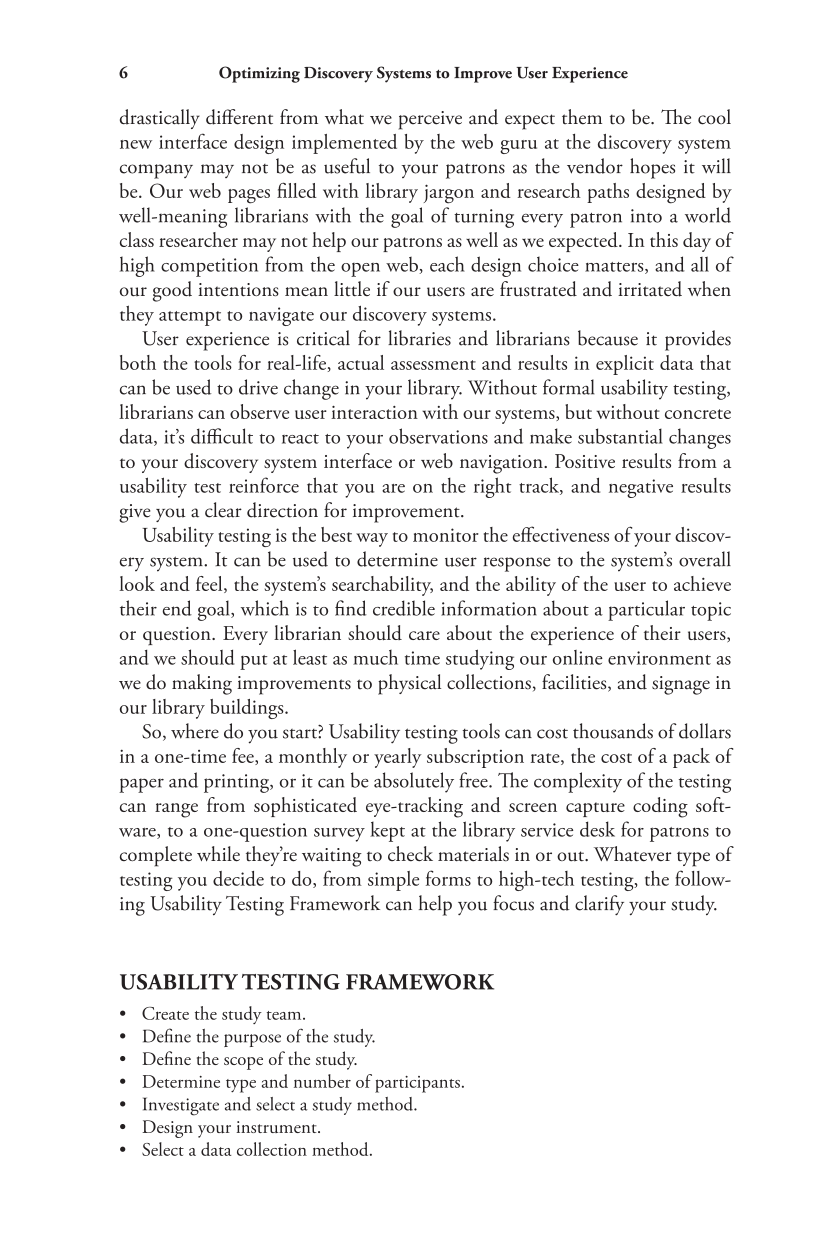6 Optimizing Discovery Systems to Improve User Experience
drastically different from what we perceive and expect them to be. The cool
new interface design implemented by the web guru at the discovery system
company may not be as useful to your patrons as the vendor hopes it will
be. Our web pages filled with library jargon and research paths designed by
well-meaning librarians with the goal of turning every patron into a world
class researcher may not help our patrons as well as we expected. In this day of
high competition from the open web, each design choice matters, and all of
our good intentions mean little if our users are frustrated and irritated when
they attempt to navigate our discovery systems.
User experience is critical for libraries and librarians because it provides
both the tools for real-life, actual assessment and results in explicit data that
can be used to drive change in your library. Without formal usability testing,
librarians can observe user interaction with our systems, but without concrete
data, it’s difficult to react to your observations and make substantial changes
to your discovery system interface or web navigation. Positive results from a
usability test reinforce that you are on the right track, and negative results
give you a clear direction for improvement.
Usability testing is the best way to monitor the effectiveness of your discov-
ery system. It can be used to determine user response to the system’s overall
look and feel, the system’s searchability, and the ability of the user to achieve
their end goal, which is to find credible information about a particular topic
or question. Every librarian should care about the experience of their users,
and we should put at least as much time studying our online environment as
we do making improvements to physical collections, facilities, and signage in
our library buildings.
So, where do you start? Usability testing tools can cost thousands of dollars
in a one-time fee, a monthly or yearly subscription rate, the cost of a pack of
paper and printing, or it can be absolutely free. The complexity of the testing
can range from sophisticated eye-tracking and screen capture coding soft-
ware, to a one-question survey kept at the library service desk for patrons to
complete while they’re waiting to check materials in or out. Whatever type of
testing you decide to do, from simple forms to high-tech testing, the follow-
ing Usability Testing Framework can help you focus and clarify your study.
USABILITY TESTING FRAMEWORK
• Create the study team.
• Define the purpose of the study.
• Define the scope of the study.
• Determine type and number of participants.
• Investigate and select a study method.
• Design your instrument.
• Select a data collection method.






















































































































































